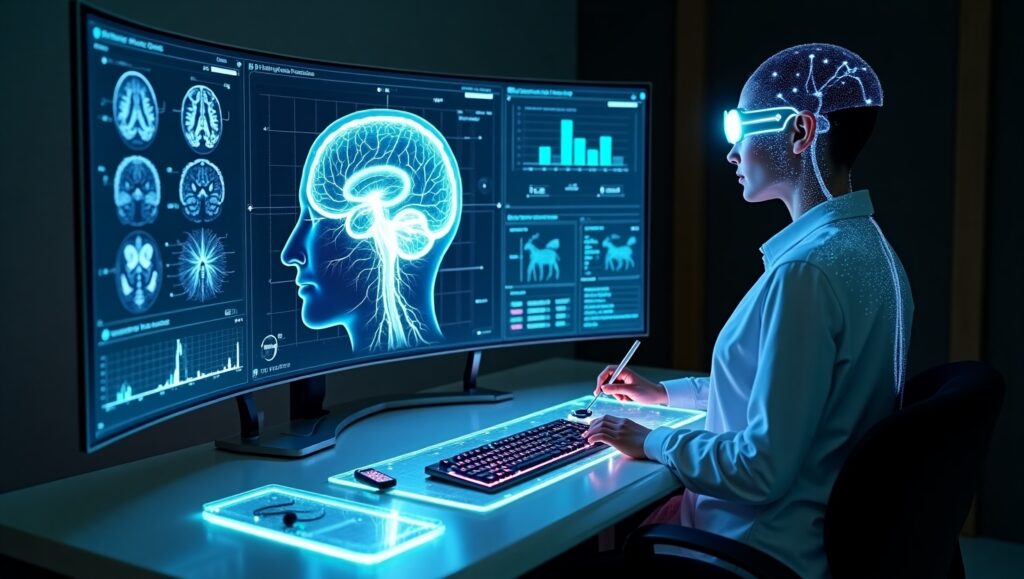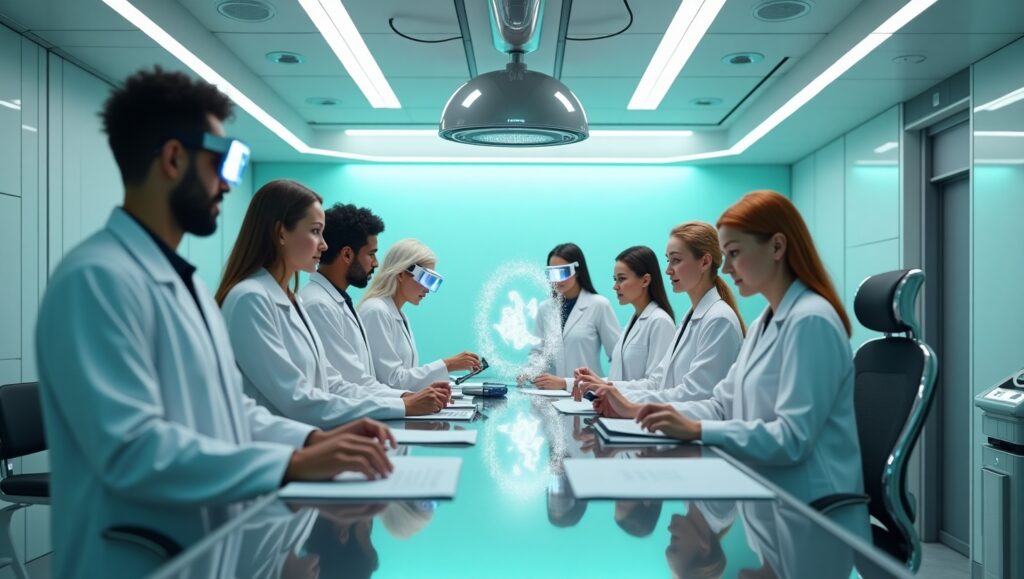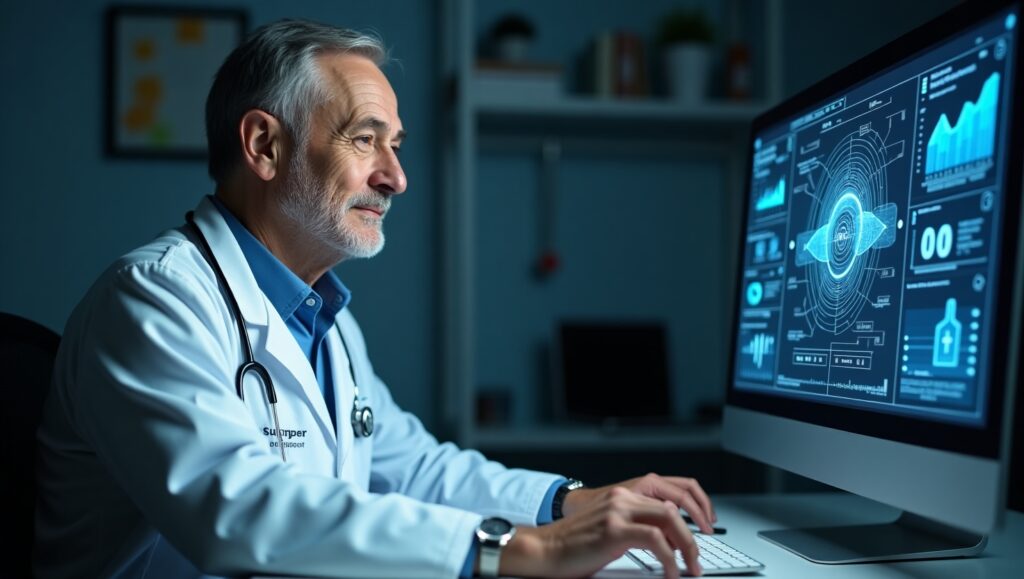Discover the best AI tools for medical diagnosis that are transforming healthcare. Learn how AI enhances accuracy, reduces errors, and improves patient outcomes.
Meta Keywords:
AI tools for medical diagnosis, artificial intelligence in healthcare, AI-powered diagnosis, AI medical tools, healthcare AI, machine learning in medicine, AI for doctors, AI diagnosis accuracy, future of AI in healthcare
AI Tools for Medical Diagnosis: The Future of Healthcare is Here
Imagine walking into a doctor’s office, not just to consult a physician but to have an AI-powered assistant analyze your medical history, scan your test results, and provide a near-instant diagnosis—down to the probability of various conditions. Sounds futuristic? Well, that future is now.
Artificial Intelligence (AI) is no longer just a buzzword in medicine. It’s a game-changer, redefining the accuracy and speed of medical diagnostics. From detecting cancer before it becomes life-threatening to predicting the onset of neurological disorders, AI is revolutionizing how healthcare professionals make life-saving decisions.
But how do these AI tools actually work? And more importantly, can we trust them? Let’s dive into the world of AI-powered medical diagnostics.

What Are AI Tools for Medical Diagnosis?
AI tools for medical diagnosis are sophisticated software systems that leverage machine learning (ML), deep learning, and natural language processing (NLP) to analyze medical data, detect patterns, and provide diagnostic recommendations.
Think of them as digital detectives—capable of analyzing thousands of medical images, genetic sequences, and patient histories faster than a team of doctors.
How Do They Work?
- Data Collection – AI tools gather vast amounts of medical data, including X-rays, MRI scans, blood tests, and patient history.
- Pattern Recognition – By analyzing millions of previous cases, AI detects abnormalities and matches them with known medical conditions.
- Probability Analysis – AI assigns probability scores to possible diagnoses, helping doctors prioritize testing and treatment.
- Continuous Learning – With every new case, the AI model improves, becoming even more accurate over time.
These tools are not replacing doctors—they are enhancing their decision-making and reducing diagnostic errors.
How AI is Changing Medical Diagnosis?
AI is disrupting traditional medical diagnosis in ways that were once unimaginable. Here’s how:
🔍 Early Detection Saves Lives
AI can detect diseases like cancer, Alzheimer’s, and heart disease at their earliest stages—when they are most treatable. This means higher survival rates and better patient outcomes.
⚡ Lightning-Fast Diagnoses
Doctors no longer have to wait days or weeks for test results. AI-powered tools analyze X-rays, MRIs, and lab reports within seconds, making faster treatment decisions possible.
📊 Higher Accuracy, Fewer Errors
Humans make mistakes. Even the most experienced doctors can misdiagnose conditions. AI, however, cross-references millions of medical cases and flags potential errors, reducing misdiagnosis rates dramatically.
🌎 Healthcare Without Borders
AI brings quality healthcare to remote areas where trained specialists are scarce. With just an internet connection, AI-powered diagnostic tools can help doctors in rural clinics make life-saving decisions.

Top AI Tools for Medical Diagnosis
1. IBM Watson Health – The AI Doctor’s Assistant
IBM Watson Health sifts through massive amounts of medical literature, patient records, and research papers to help doctors make informed decisions. It even recommends personalized treatment plans based on genetic factors.
2. Google DeepMind Health – Seeing Beyond Human Eyes
DeepMind’s AI can analyze medical images with superhuman accuracy. It has already helped doctors diagnose eye diseases, kidney failures, and even brain tumors earlier than ever before.
3. PathAI – Revolutionizing Cancer Detection
PathAI helps pathologists identify cancerous tissues with incredible precision, reducing the risk of misdiagnosis and ensuring timely treatment.
4. Aidoc – AI for Emergency Rooms
Used in hospitals worldwide, Aidoc scans CT scans and MRIs for abnormalities. It’s like having a 24/7 AI radiologist on call, helping doctors spot internal bleeding or strokes instantly.
5. Tempus – Personalized Cancer Treatment
Tempus combines AI with genomic sequencing to tailor treatments for cancer patients. No more trial-and-error—just precise, targeted therapy.
6. Zebra Medical Vision – Detecting Hidden Illnesses
Zebra Medical Vision’s AI scans X-rays for hidden diseases like osteoporosis, lung disorders, and heart conditions—before symptoms even appear.
7. Qure.ai – AI-Powered Radiology
Qure.ai specializes in automated X-ray and CT scan analysis, helping doctors detect tuberculosis, lung nodules, and fractures with pinpoint accuracy.

Advantages of AI in Medical Diagnosis
✅ Unmatched Accuracy – AI detects minute details in medical scans that the human eye can miss.
✅ Time-Saving – Doctors spend less time analyzing scans, allowing them to focus on patient care.
✅ Cost-Effective – AI minimizes unnecessary tests and speeds up treatment, reducing healthcare costs.
✅ Remote Healthcare – AI makes quality diagnosis accessible even in rural areas.
Challenges of AI in Medical Diagnosis
⚠️ Privacy Concerns – Patient data security remains a major challenge. AI systems must be hacker-proof to prevent data breaches.
⚠️ AI Bias – AI learns from human data, and if that data is biased, AI can make unfair or inaccurate diagnoses.
⚠️ Regulatory Hurdles – AI tools must meet strict medical regulations before they can be used in real-world hospitals.
⚠️ Doctor-AI Trust – Some doctors remain skeptical about AI, fearing it might replace human expertise. (Spoiler: It won’t. AI is a tool, not a replacement.)
The Future of AI in Medical Diagnosis
The next decade will witness AI-driven breakthroughs that redefine healthcare. What can we expect?
🔹 Personalized medicine tailored to individual genetic profiles.
🔹 AI-powered robotic surgeries that minimize human error.
🔹 Real-time health monitoring with AI-driven wearable devices.
🔹 AI chatbots acting as virtual doctors, providing instant medical advice.
The healthcare revolution has just begun, and AI is at the heart of it.
Conclusion: AI and the Future of Healthcare
AI tools for medical diagnosis are not science fiction—they are today’s reality. With unparalleled accuracy, speed, and efficiency, AI is helping doctors make smarter, faster, and life-saving decisions.
Of course, AI is not without its challenges. Privacy concerns, regulatory barriers, and AI bias remain hurdles that must be overcome. But one thing is certain: AI will not replace doctors. It will make them better.
Healthcare is changing—and AI is leading the charge. Are we ready to embrace it?
FAQs
1. Can AI completely replace doctors in medical diagnosis?
No, AI assists doctors but does not replace human expertise.
2. Are AI medical diagnosis tools safe?
Yes, but they must undergo rigorous testing before use in hospitals.
3. What diseases can AI detect?
AI can detect cancer, Alzheimer’s, heart disease, tuberculosis, and more.
4. How accurate is AI in medical diagnosis?
AI has surpassed human accuracy in some areas, like radiology and pattern recognition.
5. What’s the biggest challenge in AI-based diagnosis?
Data privacy and AI bias are major challenges that still need addressing.